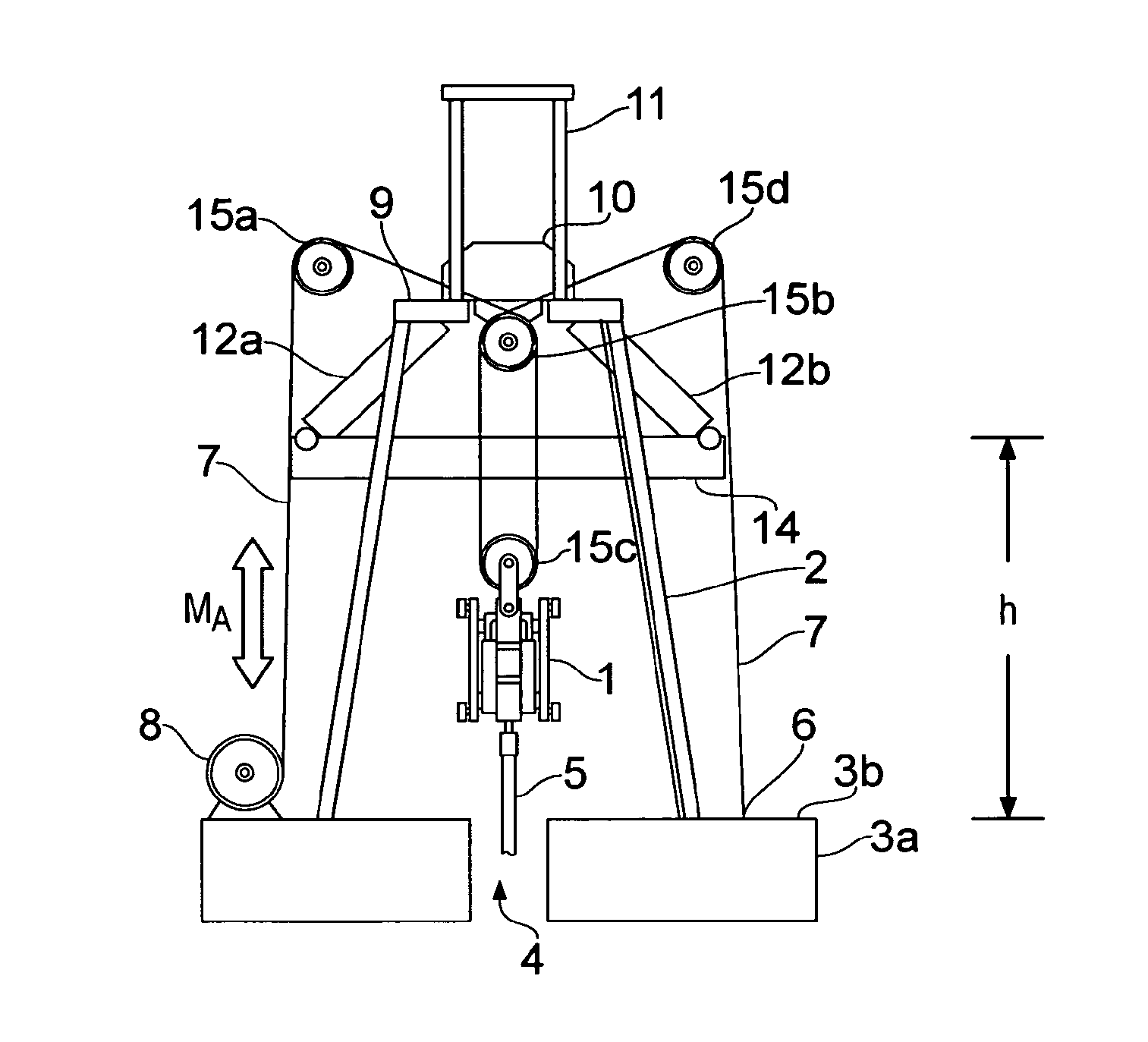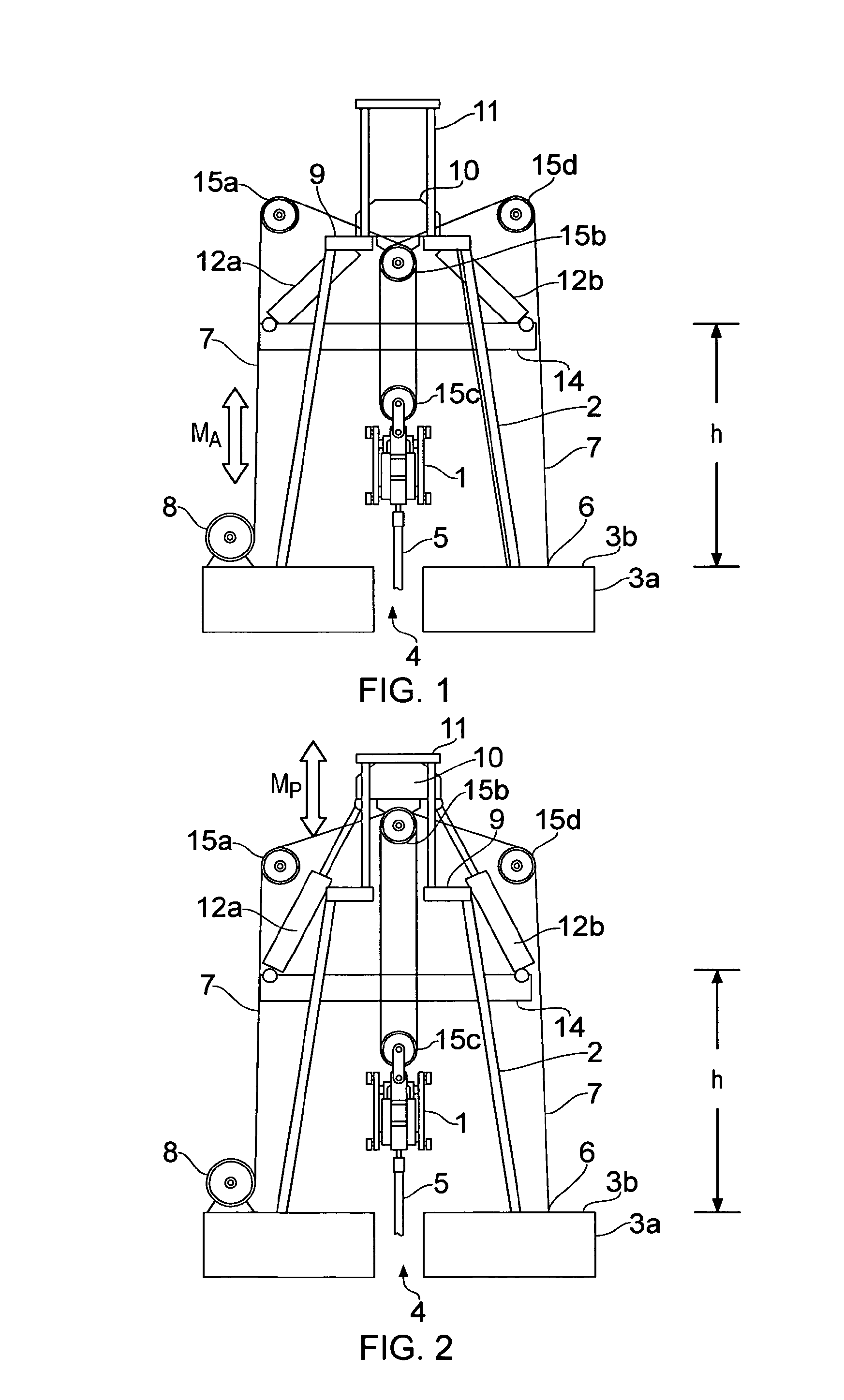Compensator
a compensator and compression technology, applied in the field of oil and gas drilling, can solve problems such as the loss of drill string compensation, and achieve the effect of reducing capacity and eliminating the risk of losing compensator capabilities in “fixed-to-bottom” operations
- Summary
- Abstract
- Description
- Claims
- Application Information
AI Technical Summary
Benefits of technology
Problems solved by technology
Method used
Image
Examples
Embodiment Construction
[0021]FIG. 1 is a schematic illustration of the motion compensator system according to the invention in an active mode. A derrick 2 is supported by a floating vessel (indicated schematically as 3a) having a deck structure 3b. A drilling machine 1 is suspended by the derrick and controls a drill string 5 extending through a moon pool 4 and, into the water and to the seabed (not shown). This arrangement is well known in the art.
[0022]The drill string 5 is suspended by a crown block 10, via the drilling machine 1 and a wire-and-sheave arrangement 7, 15b,c. In this active compensation mode, the crown block 10 is resting on, and preferably bolted to, a watertable 9 in the derrick. A drawworks 8 is connected to the deck structure 3b and to the drilling machine 1 via a wire 7 running through sheaves 15a-d and to a connection point 6 on the deck structure (required power and control devices, hydraulic hoses, etc., have been omitted from the figure, as these items are well known in the art)....
PUM
 Login to View More
Login to View More Abstract
Description
Claims
Application Information
 Login to View More
Login to View More - R&D
- Intellectual Property
- Life Sciences
- Materials
- Tech Scout
- Unparalleled Data Quality
- Higher Quality Content
- 60% Fewer Hallucinations
Browse by: Latest US Patents, China's latest patents, Technical Efficacy Thesaurus, Application Domain, Technology Topic, Popular Technical Reports.
© 2025 PatSnap. All rights reserved.Legal|Privacy policy|Modern Slavery Act Transparency Statement|Sitemap|About US| Contact US: help@patsnap.com


